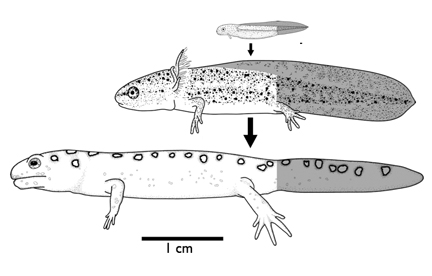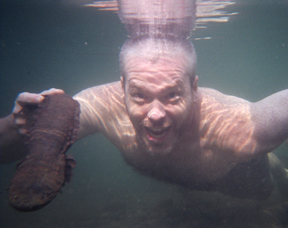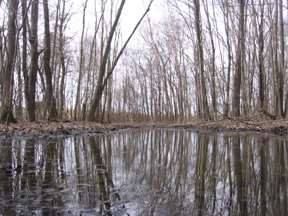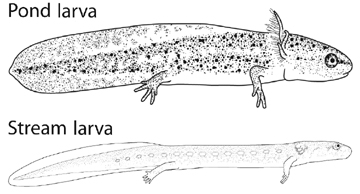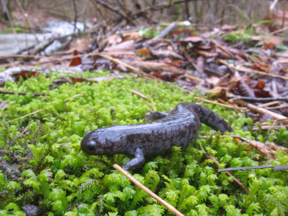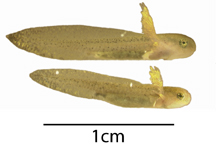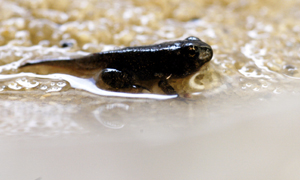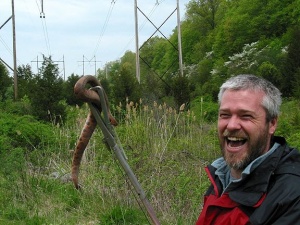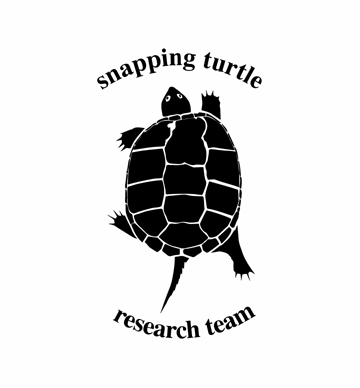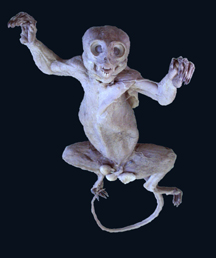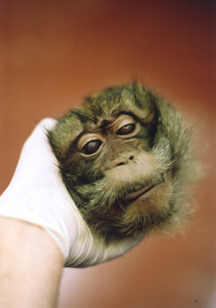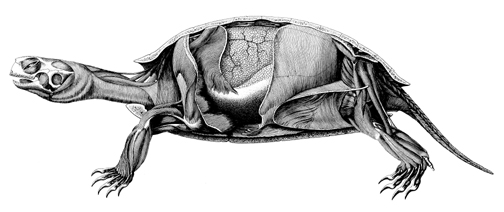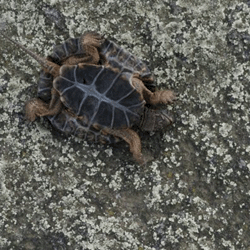Difference between revisions of "Tobias Landberg"
m |
m |
||
| Line 49: | Line 49: | ||
== '''Other projects:''' == | == '''Other projects:''' == | ||
| − | <br>[[Image:Bufometamorph2.jpg|left]] | + | <br>During my tenure here at UConn, I've engaged in a number of other fruitful projects. They are just for fun and as such are all collaborative efforts. |
| + | [[Image:Bufometamorph2.jpg|left]] | ||
[[Image:Chorusfrogmetamorph.jpg|right]] | [[Image:Chorusfrogmetamorph.jpg|right]] | ||
| − | + | ||
=== '''Predator induced plasticity:''' === | === '''Predator induced plasticity:''' === | ||
| − | One of the best-studied forms of adaptive plasticity in amphibians is their response to predators. Most of this work has been done on frogs but there are still many unanswered questions. Early hatching in response to egg predators is practically ubiquitous among amphibians, but what are the long term costs of leaving the egg early? | + | One of the best-studied forms of adaptive plasticity in amphibians is their response to predators. Most of this work has been done on frogs but there are still many unanswered questions. Early hatching in response to egg predators is practically ubiquitous among amphibians, but what are the long term costs of leaving the egg early? How do predators that specialize on different life stages interact? Since metamorphosis is thought to be a particularly vulnerable life stage, is it responsive to the presence of predators? Has metamorphosis been selected to be as rapid as possible? Is it constrained physiologically by the demands of transforming practically all the systems and organs? |
| + | <br> | ||
| + | <br> | ||
| + | [[Image:T_and_c-head2.jpg|right|300px]] | ||
| + | [[Image:Leah sm.jpg|left]] | ||
| + | I mentored Leah Brown-Wilusz honors thesis (under Carl Schlichting's supervision),and together we designed an experiment to address some of these questions in our local spotted salamander (''Ambystoma maculatum''). We raised embryos with and without egg predators (trichopteran larvae) and larval predators (marbled salamander larvae:''Ambystoma opacum'') to see if early hatching affected the response to larval predators. It didn't affect hatching. Presence of the egg predator caused early hatching regardless of the presence of the larval predator indicating that the immediate threat outweighs any future potential threat. Next we looked at morphology and escape performance with lethal fish predators. Salamander embryos exposed to larval predators grew larger tail fins and survived longer with the predators but early hatching incurred a cost– smaller tails and shorter survival times. The effect of early hatching even extended to the adult life stage. Those animals that hatched early in response to the egg predator were smaller at metamorphosis. The early hatching response therefore looks to be maintained as a plastic strategy by costs in the larval period in terms of larval predator avoidance as well as potential fitness costs at metamorphosis. | ||
| + | |||
[[Image:Snapperdesignsmall.jpg|center|]] | [[Image:Snapperdesignsmall.jpg|center|]] | ||
| − | + | ||
[[Image:Primatesuperherosmall.jpg|right|300px]] | [[Image:Primatesuperherosmall.jpg|right|300px]] | ||
[[Image:Macacamulattasmall.jpg|left]] | [[Image:Macacamulattasmall.jpg|left]] | ||
Revision as of 15:43, 6 July 2008
Doctoral Student
Office: BioPharmacy 410
Voice: (860) 486-4158
E-mail: tobias.landberg@uconn.edu
Mailing address:
75 N. Eagleville Road, U-3043
Storrs, CT 06269
Contents
About:
I am currently a PhD candidate in the Ecology & Evolutionary Biology department at the University of Connecticut, Storrs.
Co-advisors Drs. Kurt Schwenk & Carl Schlichting head my committee– which also includes Drs. Elizabeth Jockusch and Kentwood Wells.
Research philosophy:
"Evolutionary-developmental-functional-eco-morphology" was the joke term I coined with my good friend Manny Azizi to cover our interests. In a nutshell, it's about unraveling the mobius strip of how organisms perform their behaviors, how sources of variation affect that performance, and how that performance affects evolution. The three main sources of variation in nature are ontogenetic (or developmental), ecological (or environmental) and phylogenetic (or evolutionary or genetic). Raising one species of animal under different conditions can reveal whether developmental variation is affected by that environment. Raising related species under the same set of different environments can reveal whether their response to the environment has evolved. Together with detailed knowledge of the animals' environments and the results of a variety of performance tests, the adaptive nature of all this variation can be used to interpret evolution.
Dissertation research:
As the above statement shows, my research interests are broad. The goal of my dissertation work is to study how ontogenetic and ecological sources of variation contribute to species level diversity. If we look at salamanders generally, we see that one of the repeated patterns is to incorporate larval features into the adult forms. The general term for this is paedomorphosis. To understand the processes underlying this macroevolutionary pattern, I have turned to the source: salamander larvae. Salamander larvae are surprisingly uniform, at least compared to frog larvae. However, they do vary consistently along one ecological axis. Salamander larvae that live in ponds characteristically have large gills and tail fins while those that live in streams have small gills and tail fins. Not coincidentally, these are some of the same structures that vary across paedomorphic adult salamanders.
Oxygen plasticity:
Gills and tail fins are respiratory organs in amphibians and they are responsive to dissolved oxygen levels. To see how the environment affects these organs, I raised spotted salamanders in high or low oxygen. Not surprisingly, the ones raised in low oxygen developed larger gills and tail fins. Plasticity often comes at a cost– investment in metabolically active tissues could retard growth or development. Surprisingly, those same animals that invested extra energy in respiratory organs also metamorphosed early. In retrospect it looks like this was an adaptive response. That is, low oxygen probably indicates poor water quality and pond drying. Larvae experiencing such conditions in the wild would probably be well served by getting out of the pond before they turn into the proverbial "meadow raisin".
Maternal investment:
Egg size is another feature that varies dramatically among amphibians living in different environments. Stream breeders typically have large eggs while pond breeders have relatively small eggs. This difference has important evolutionary consequences because females are resource limited and cannot both have large eggs and many of them. This trade-off and correlation with habitat strongly suggests that stream environments require large eggs because of the high quality offspring they produce.
My approach to this question is experimental. By surgically removing small quantities of yolk from developing embryos, maternal investment can be artificially manipulated. The strategy is to compare siblings who have had yolk removed to the sham operated group– those who were "poked" but no yolk was actually removed. Differences in growth and development between the two groups are interpreted as due to the amount of yolk they had. Tiny quantities of yolk can affect development from hatching all the way through metamorphosis.
Other projects:
During my tenure here at UConn, I've engaged in a number of other fruitful projects. They are just for fun and as such are all collaborative efforts.
Predator induced plasticity:
One of the best-studied forms of adaptive plasticity in amphibians is their response to predators. Most of this work has been done on frogs but there are still many unanswered questions. Early hatching in response to egg predators is practically ubiquitous among amphibians, but what are the long term costs of leaving the egg early? How do predators that specialize on different life stages interact? Since metamorphosis is thought to be a particularly vulnerable life stage, is it responsive to the presence of predators? Has metamorphosis been selected to be as rapid as possible? Is it constrained physiologically by the demands of transforming practically all the systems and organs?
I mentored Leah Brown-Wilusz honors thesis (under Carl Schlichting's supervision),and together we designed an experiment to address some of these questions in our local spotted salamander (Ambystoma maculatum). We raised embryos with and without egg predators (trichopteran larvae) and larval predators (marbled salamander larvae:Ambystoma opacum) to see if early hatching affected the response to larval predators. It didn't affect hatching. Presence of the egg predator caused early hatching regardless of the presence of the larval predator indicating that the immediate threat outweighs any future potential threat. Next we looked at morphology and escape performance with lethal fish predators. Salamander embryos exposed to larval predators grew larger tail fins and survived longer with the predators but early hatching incurred a cost– smaller tails and shorter survival times. The effect of early hatching even extended to the adult life stage. Those animals that hatched early in response to the egg predator were smaller at metamorphosis. The early hatching response therefore looks to be maintained as a plastic strategy by costs in the larval period in terms of larval predator avoidance as well as potential fitness costs at metamorphosis.

